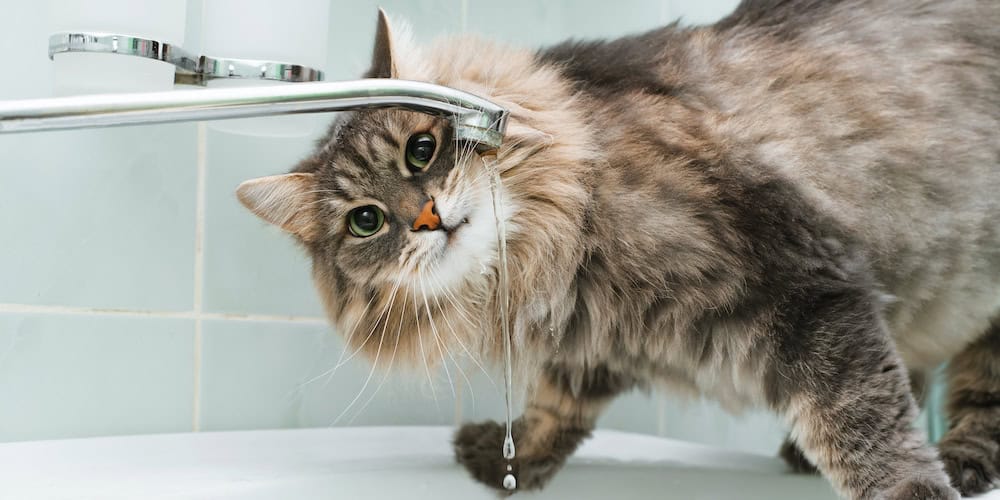A urinary tract infection is a common reason for veterinary consultation in cats. But first, it’s important not to confuse a urinary tract infection with cystitis.
A urinary tract infection occurs when a pathogen, mainly a bacterium, multiplies in the urinary tract. Cystitis, on the other hand, is an inflammation that is not always caused by the presence of bacteria.
Cystitis can therefore have several causes. Presence of urinary crystals or stones, idiopathic cystitis, stress-related cystitis, etc., including a urinary tract infection.
All too often, cat owners make this mistake, thinking that cystitis and urinary tract infection are synonymous, when a urinary tract infection is indeed one of the causes of cystitis.
A urinary tract infection can take different forms in cats depending on the location of the infection: kidney (pyelonephritis), bladder (cystitis) or prostate (prostatitis).
📚 Read also | A veterinarian tells us how to choose the best cat food
My cat has pyelonephritis, a kidney infection
How bacteria end up in the kidneys
When bacteria form an infectious focus in the kidneys, their origin can be twofold.
On the one hand, bacteria can come from the lower urinary tract, that is, the urethra and the bladder. The urethra is the canal that allows urine to be expelled from the bladder to the outside.
When bacteria travel up the urethra to the bladder, they can continue rising all the way to the kidneys by using a second duct, the ureter, which connects the kidneys to the bladder (each kidney has its own ureter connecting it to the bladder).
This is known as an ascending infection. It is the most common cause of pyelonephritis.
On the other hand, bacteria can come from the blood, which is called bacteremia. The role of the kidneys is to filter the blood to remove waste by producing urine. When bacteria are present there, they can lodge in the kidneys and multiply.
In both cases, this bacterial multiplication leads to pyelonephritis.
What to do if my cat has pyelonephritis
If your cat has pyelonephritis, the tissues of its kidneys are progressively damaged by the infection.
This results in various clinical signs such as lethargy, vomiting, or loss of appetite, to name just a few.
Keep in mind that pyelonephritis is painful in cats. Because cats show little sign of pain, you may not notice it.
I therefore recommend contacting your veterinarian for a diagnosis and prompt medical treatment before complications set in.
Medical care is all the more essential since pyelonephritis can quickly progress to kidney failure.
My cat has cystitis
Symptoms
In cases of cystitis, several symptoms may occur in cats.
Unlike the kidneys, which are located in the upper urinary tract, cystitis refers to a lower urinary tract condition (bladder and/or urethra).
The signs you may see in your cat are the following:
- Pollakiuria: your cat urinates more frequently
- Dysuria: your cat has difficulty urinating
- Stranguria: your cat shows signs of pain during urination (the act of urinating)
- Hematuria: your cat’s urine contains blood
An examination by your veterinarian, together with additional tests such as urinalysis and ultrasound, allows a diagnosis to be made and the right treatment to be chosen.
Feline urological syndrome (SUF)
If you own a cat, you may already have heard of the acronym « SUF ». It denotes the feline urological syndrome.
This syndrome involves the lower urinary tract (bladder and/or urethra). Cystitis is almost always present in cases of SUF.
The cause is most often unknown; this is called idiopathic cystitis. However, certain factors predispose cats to SUF, such as stress or a diet low in water.

My cat has prostatitis
Prostatitis is an inflammation of the prostate, the gland that surrounds the urethra, in male cats only.
As with pyelonephritis, the infection is most often ascending.
A prostatitis can develop into an abscess if it is not addressed, which is why I recommend consulting your veterinarian if in doubt.
Keep in mind that at the first sign of urinary problems in your cat, it is essential to speak to your veterinarian promptly to prevent it from becoming an emergency.
How to adjust my cat’s diet in the event of a urinary tract infection?
Increase water intake
Depending on the cause, your cat’s diet can prevent the first occurrence of urinary infections as well as recurrences.
One of the dietary levers remains increasing water intake. The goal is to dilute the urine to avoid irritation of the urinary tract.
A wet diet, such as pâtés, is therefore still recommended, in addition to placing several water bowls in your home.
You can also invest in a water fountain because some cats like moving water, which encourages them to drink.
📚 Read also | How to choose the best pâtés for cats? A veterinarian’s opinion
Limit the formation of crystals and stones
In cats, the most common urinary stones are generally composed of struvite or calcium oxalate crystals.
Be aware that crystals and stones are not always present in cases of urinary problems.
The formation of crystals depends on urinary pH and the minerals present in the urine, which in turn depend on the cat’s diet.
Nowadays, you can choose foods formulated to prevent the formation of crystals in your cat’s urine in order to reduce the risk of cystitis.
I recommend turning to your veterinarian, who can advise you best, whether for choosing commercial foods or for developing a balanced, home-prepared diet tailored to your cat.
Sources and scientific studies
BOUZOURAA Tarek. “Characterization and diagnosis of urinary tract infections.” Le Point Vétérinaire no. 415, March 1, 2021, pp. 18-23
CHEVASSU Audrey. “Management of a urinary tract infection.” La Semaine Vétérinaire no. 2006, October 13, 2023. Article written based on a web conference held on the occasion of Cerba Vet College on January 24, 2023
COLLIARD Laurence, BLANCHARD Géraldine, PARAGON Bernard-Marie. “Feeding a cat during urinary obstruction.” Le Point Vétérinaire no. 267, July 1, 2006, pp. 28-32



